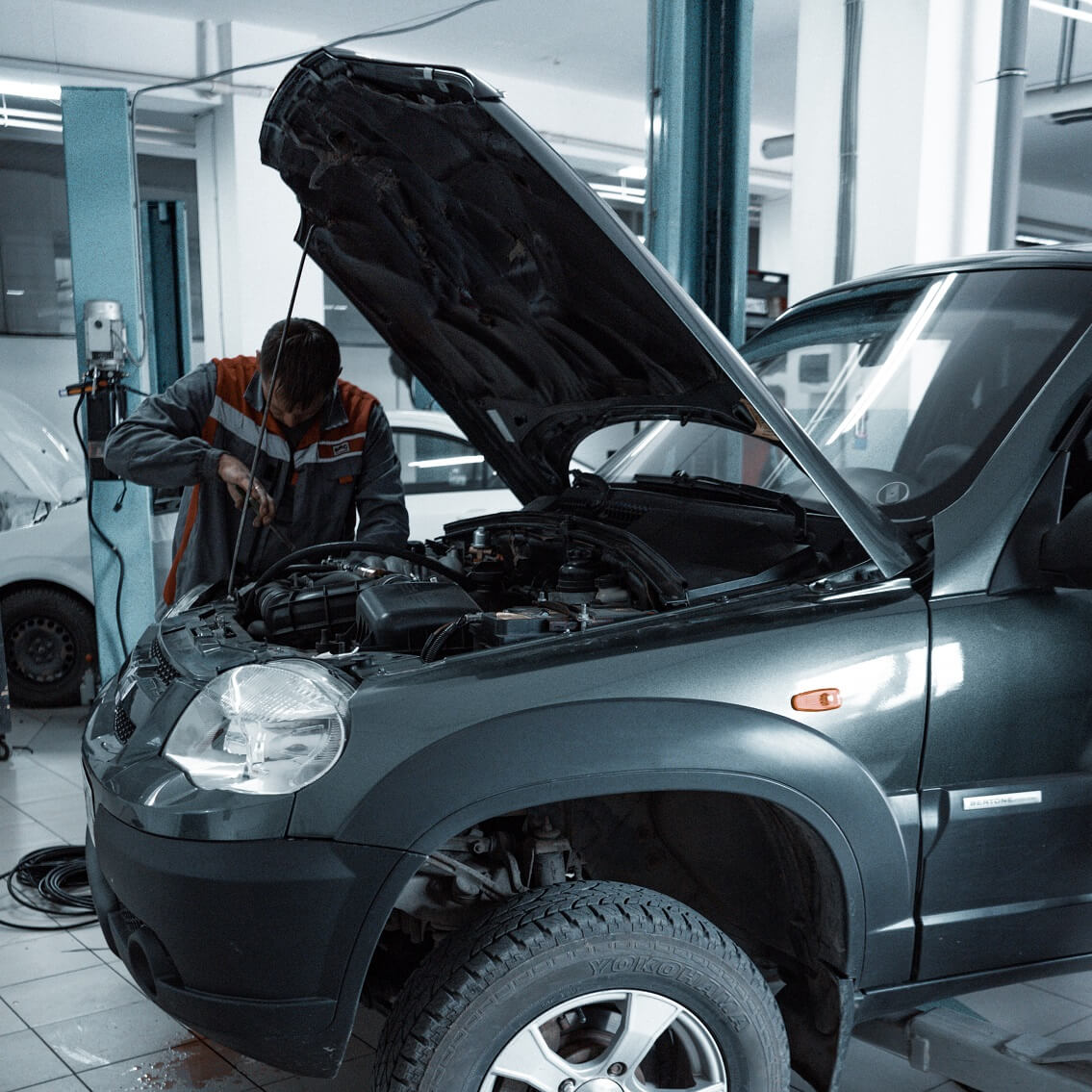What is tested at the TÜV?

Did you know that the TÜV has been an integral part of Germany for over 70 years now? In order to ensure that vehicles are roadworthy, they are subjected to a technical inspection every 2 years (new cars only after the first 3 years). But what exactly is checked on the car during the main inspection (HU)?
Inspection of the vehicle
The maintenance is carried out by a TÜV inspector from the steering to the chassis. If you are unsure whether your vehicle will pass the inspection without any defects, you can have it checked and, if necessary, repaired in advance at a motor vehicle workshop. A specialist knows which relevant parts are checked during a main inspection and can thus assess whether the vehicle will pass the inspection. This way you can be sure that no expensive follow-up inspection will be necessary.
This is checked externally:
• The windscreen, rear window, headlights and exterior mirrors are checked for cracks and chips.
• The tread depth as well as damage to the tyres
This is checked internally:
• Compulsory equipment, this includes the warning triangle, two high-visibility waistcoats, a first-aid kit, spare tyres or breakdown kit.
• Checking the battery and brake fluid
Then the inspector gets behind the wheel and does a test drive at 8 km/h to check airbags, ABS and ESP. He will also check the shock absorbers and braking ability, and listen for any unusual noises in the engine compartment. After the short test drive, your vehicle is taken to the lifting platform. There, the expert will inspect the brake pads, axles, joints, exhaust system and wheel suspensions. Likewise, attention is paid to the seals and to possible fluid loss and rust corrosion.
The next step is to check the lights. Each light is checked, from the indicator to the number plate illumination. Likewise, the setting of the wide beam regulation must be correct, if it is present. At this point, the lighting is checked according to the Road Traffic Licensing Regulations (StVZO).
The exhaust emission test (AU) can also be taken before the acceptance of the TÜV test. In this way, you can present the papers to the TÜV after passing the AU test. The last test may not be more than two months ago.
Finally, the papers are examined. The vehicle documents must match the chassis number.
What happens if my car has defects?
If your car is not free of defects, you will receive a list of defects from the inspector. You must rectify these complaint(s) within 4 weeks. You must then present the car to the inspection authority again.
Where can I have my car inspected?
- DEKRA
- TÜV Süd / TÜV Nord / TÜV Rheinland / TÜV Thüringen
- GTÜ
- KÜS
We wish you a safe and pleasant journey. Would you like to leave your car behind for a while and fly from BER? Then we can offer you a safe and inexpensive parking space at McParking. Our free shuttle bus will take you directly from the car park to the airport.



